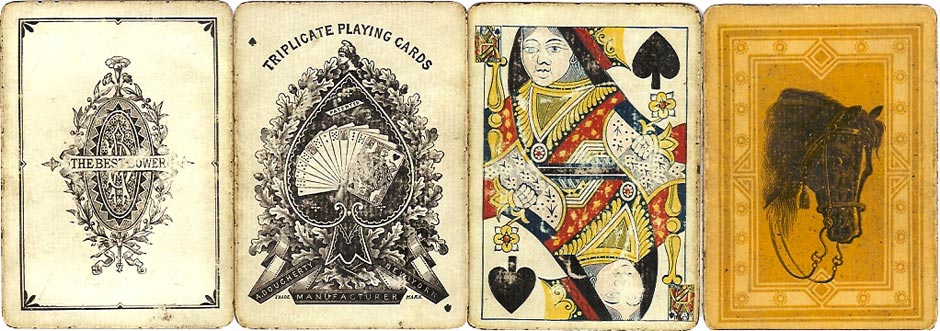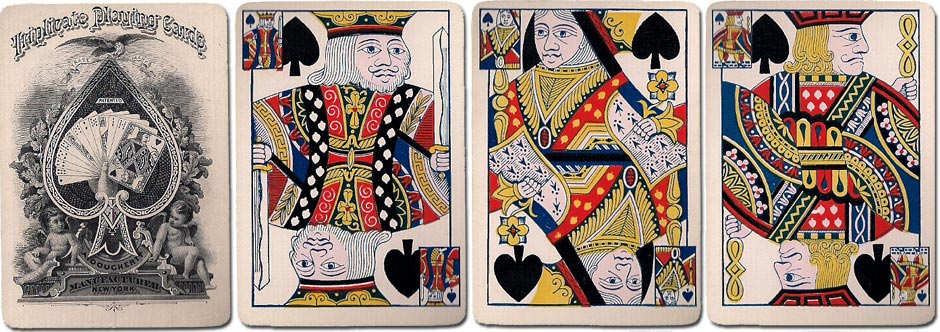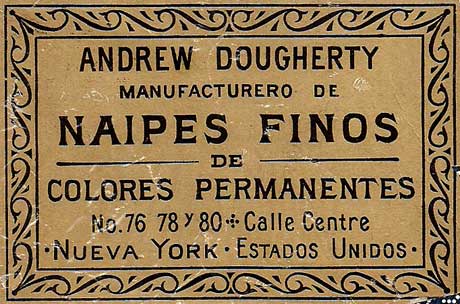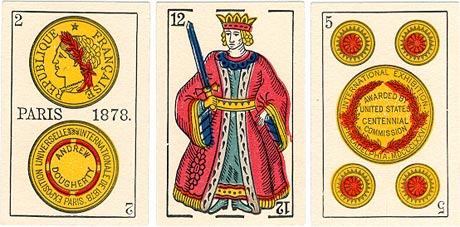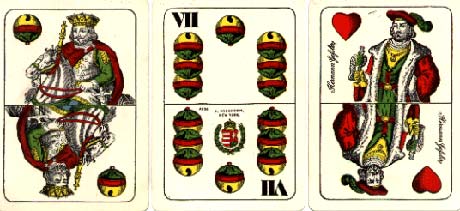Andrew Dougherty 1848-1930
Andrew Dougherty was born in Donegal in Northern Ireland in 1827. He started his playing card business in New York in 1848.
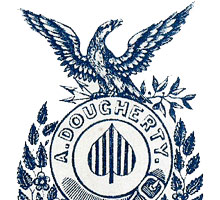
Andrew Dougherty’s story is a key part of the development of the American playing card industry and he can be credited with several innovations to playing cards.
Andrew Dougherty was born in Donegal in Northern Ireland in 1827. He started his playing card business in New York in 1848. It was also the same year Wisconsin was granted statehood and that saw the end of the Mexican-American War. Dougherty's story is a key part of the development of the American playing card industry as he can be credited with several innovations to playing cards. In 1849 he moved to a new address at Cliff Street, New York, and for a short time entered into partnership with two brothers named Coughtry. Coughtry & Dougherty stayed in business until c.1853. Dougherty soon prospered on his own, changing his address several times as he moved into better premises. Dougherty died in 1905 at the age of 78 and his sons continued to run the business in New York until 1907 when the United States Playing Card Company purchased it. USPCC kept the Dougherty business operating independently until 1930 when it was combined with the New York Consolidated Company to form Consolidated-Dougherty Card Co. Inc., a division of USPCC.
Coughtry & Dougherty
Dougherty's early cards are stencil-coloured and the suit signs are often askew. The court cards often have amusing expressions. The backs are sometimes plain, or sometimes a simple pattern. The historical context is that the New York Times started its presses and Isaac Singer invented the famous Singer Sewing Machine more or less at the same time.
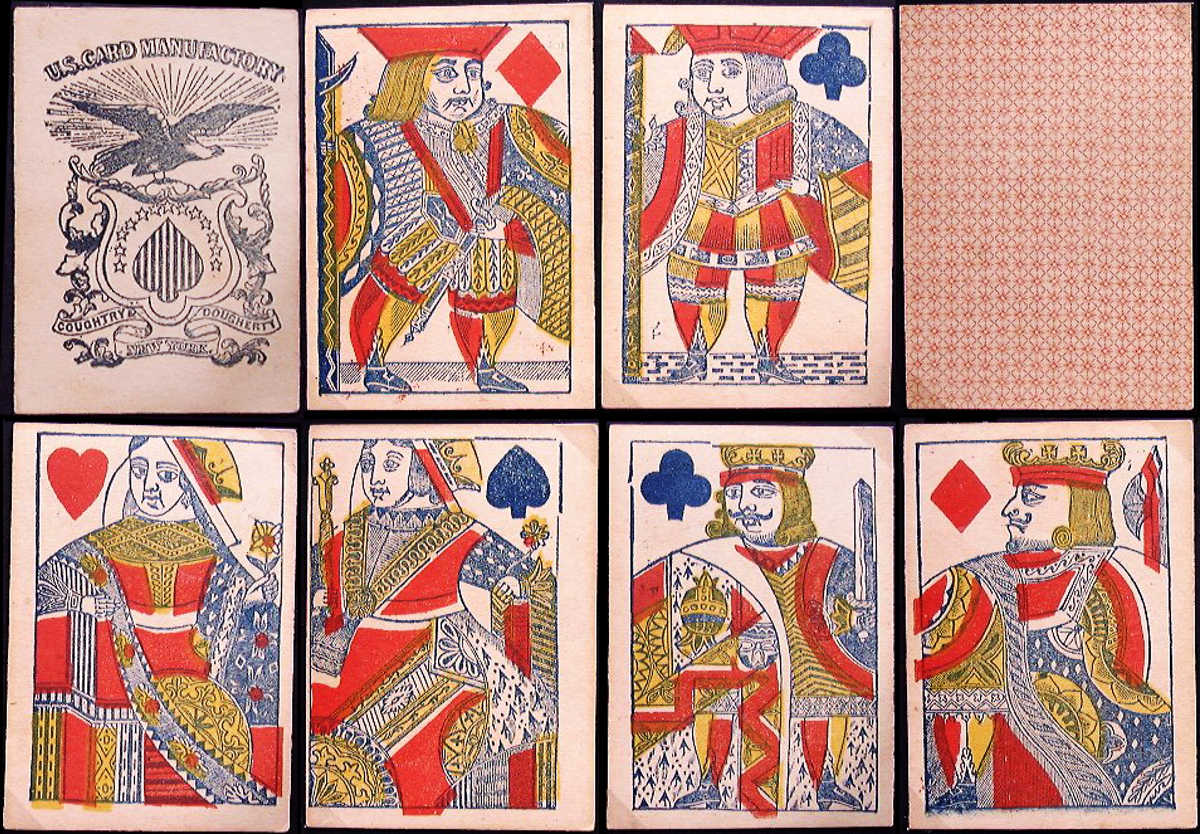
Above: cards produced during the Coughtry & Dougherty partnership era, c.1851. The colours appear to have been added by brush and stencil. An illuminated deck was also produced during this era, and which was subsequently published by A. Dougherty in c.1865 entitled 'Great Mogul Playing Cards'.
Andrew Dougherty
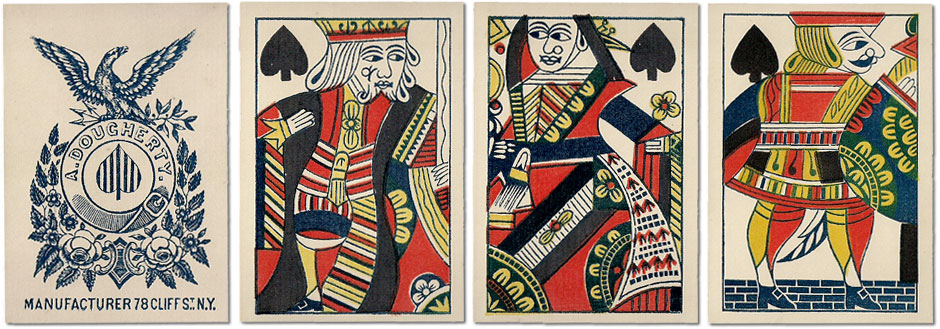
Above: an early deck by Andrew Dougherty with the Cliff Street New York address on the Ace of Spades, square corners, c.1850 see more →
Dougherty had begun his card making enterprise at Brooklyn Street, then 148 Ann Stree, then at 78 Cliff Street, New York. About 1858 the Dougherty card-manufactory was moved to 26 Beekman Street. In 1864, Louis Pasteur invented what came to be known as the “pasteurization” process that he first applied to the treatment of wine, not milk. In that same year Dougherty produced his Excelsior cards. His ”Army & Navy” deck and his beautiful illuminated deck were issued in 1865, the same year that saw the laying of the transatlantic cable, the assassination of President Abraham Lincoln, the passage of the 13th amendment abolishing slavery and the publication of Alice in Wonderland by Lewis Carroll. In 1872 Andrew Dougherty built a new factory at 76-80 Centre Street. The cards from the Centre Street factory are double-ended, but at first they seldom have indices. When they do, and when the corners are rounded instead of square, another innovation, both facts are mentioned on the wrapper.
A. Dougherty at the Centennial Exhibition, 1876
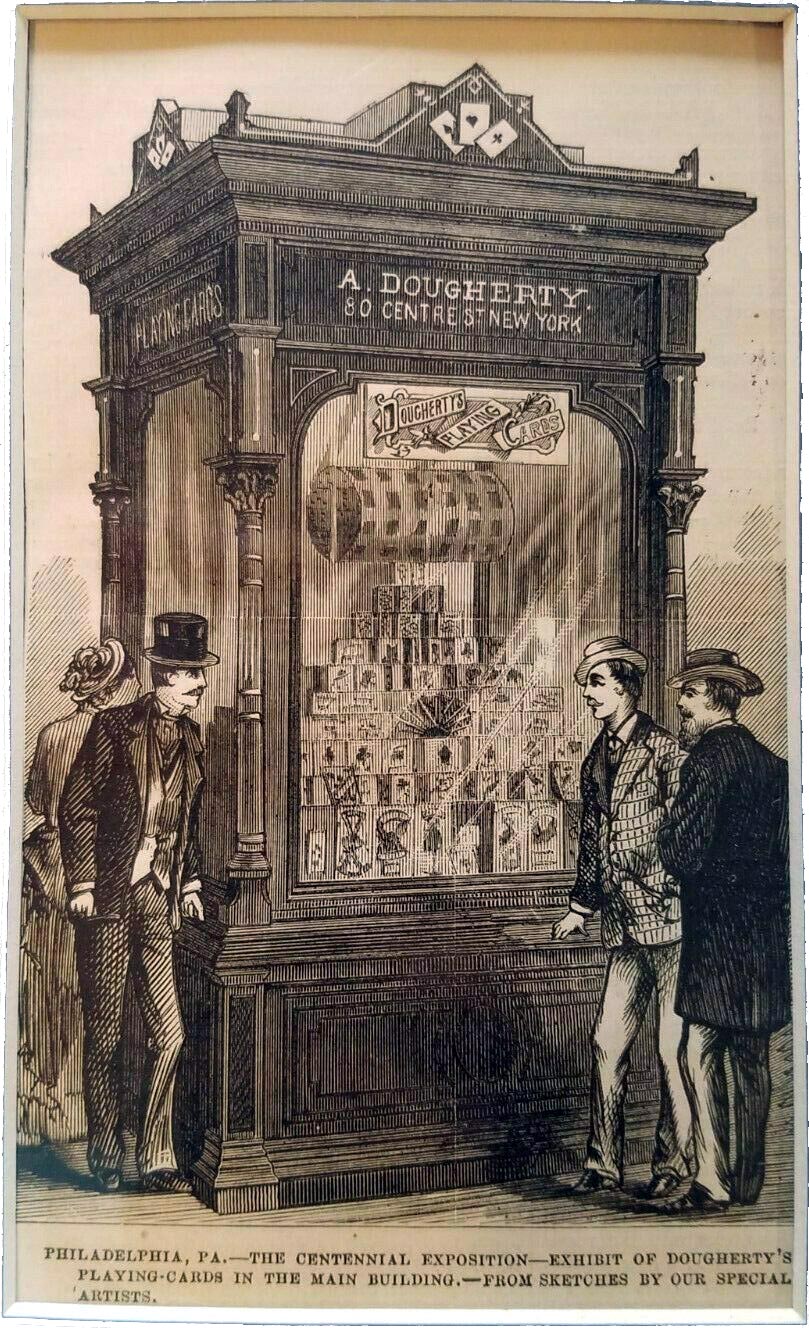
Above: A. Dougherty's stall at the Centennial Exhibition, Philadelphia. The Centennial International Exhibition of 1876, the first official World's Fair to be held in the United States, was held in Philadelphia, Pennsylvania, from May 10 to November 10, 1876, to celebrate the 100th anniversary of the signing of the Declaration of Independence in Philadelphia.
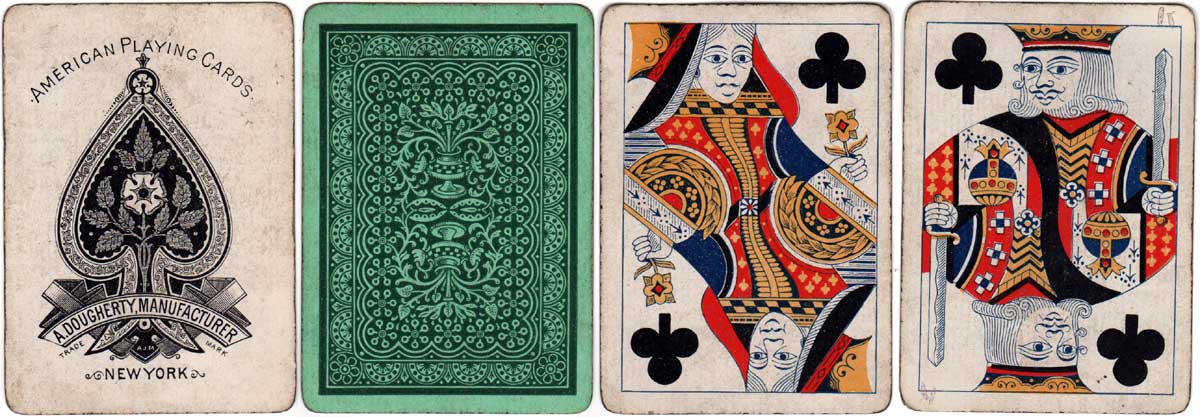
Above: American Playing Cards, A. Dougherty, c.1878. One of the last no-indices decks issued by Dougherty, the ace being the basis for the subsequent Indicator series. Image courtesy Matt Probert.
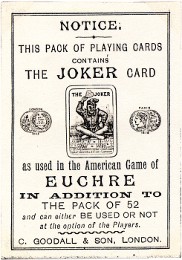
“The Best Bower” and “The Jolly Joker” cards
There is an old card game called Euchre which is still played to this day. It is played with a 32 card deck and at one time there were two additional cards which were extra trump cards. One was called a ‘Bower’ and the other, of even higher value, was called the ‘Best Bower’. Over time the game included only one ‘Bower’ card. Although the game was played with 32 cards, early American decks included a ‘Bower’ or ‘Best Bower’ card in their 52 card decks. This probably lead to the introduction of the Joker card.
“Triplicates” and “Indicators”
Dougherty first secured a patent for “Triplicates” in 1876, a novel type of indices with a miniature card in the top left-hand corner (and bottom right). These were the equivalent of NYCC's “Squeezers” and kept Dougherty at the forefront of innovation. There are several variations in the size and design of the “Triplicate” indices, with the smallest being the earliest. Dougherty's “Triplicate” playing cards have an intricately engraved Ace of Spades with a spread of cards inside the central Spade symbol proudly demonstrating the innovation.
Right: ‘Triplicate #18’ playing cards by Andrew Dougherty, c.1876. The earliest decks contain the ‘Best Bower’ but later editions contain different Jokers and a fancier Ace of Spades. This example has a decorative pictorial back design.
Lower Right: 'Triplicate No.18' playing cards by Andrew Dougherty, c.1878. This is the second version of the brand with a more elaborate Ace of Spades with the addition of two cherubs and an eagle at the top. Image courtesy Rod Starling.
Dougherty issued his final version of the triplicate brand in 1883. It introduced the beginnings of the corner numerical index and was the year that saw the opening of the famous Brooklyn Bridge, a masterpiece of engineering that still stands in full vigour today. The Manhattan end of the bridge landed just a few short blocks from Dougherty’s factory at 68 Centre Street. In 1883 Dougherty was granted a patent for “Indicator” cards with numbered indices, or “Indicators”, printed outside the border (just six years after NYCCC obtained its “Squeezer” patent for more or less the same thing). The earliest editions came with “Triplicates”, the miniature cards in the corners. These only ran for a year or less and were followed in 1894 by “Indicator No.50”.
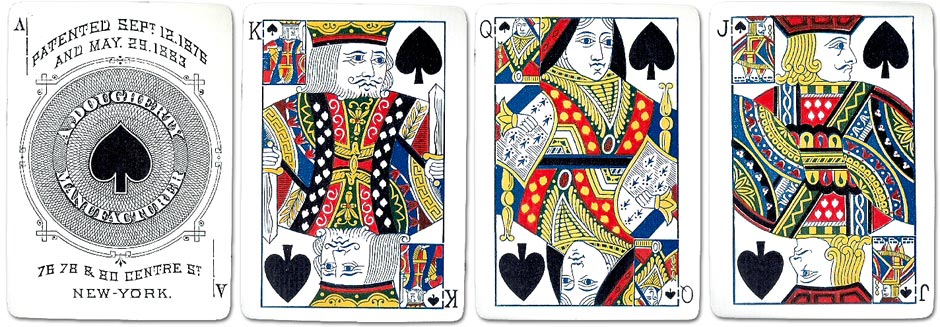
Above: Dougherty's “Ivorette No.70” deck with patent dates on Ace of Spades, c.1883. It was the last of the Triplicate series and incorporated the first use of numbered indices. They only ran for a year or less and were followed in 1894 by “Indicator No.50”. see more →
From the 1890s on Dougherty used either ‘Andrew Dougherty’ or ‘A. Dougherty’ on his Aces of Spades. As a general rule, the longer version was used on the earlier edition of each brand.
Spanish suited cards
It is recorded that Dougherty manufactured Spanish-suited cards, stencilled in golden yellow, as early as 1849 for sale in California, Texas, Mexico, South America and even in Europe, although most surviving examples of Spanish cards are from later dates. They are vivid reminders of those adventurous gold rush days of the middle of the century.
In the early 1900s Dougherty manufactured Austro-Hungarian cards in the 'Seasons' pattern. Examples of the Netherlands pattern are also known to have been manufactured by Dougherty.
See also: ”Army & Navy”, c.1865 • ”Illuminated Playing Cards”, c.1865 • “Indicators No.50” • “Tally-Ho No.9” • ”Cruiser No.96”, c.1897.
“Tally-Ho”
The famous “Tally-Ho” brand was issued by Dougherty in 1885, the same year that the Bicycle 808 brand was introduced by U.S.P.C.C.
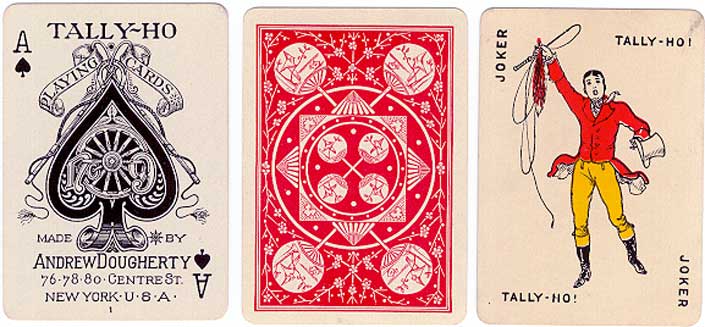
Above: cards from a c.1911 “Tally-Ho No.9” deck showing Dougherty's full name and street address. Dougherty sometimes included his first name on the Ace of Spades and sometimes only his initial. Also, sometimes he included his full street address on the Ace and sometimes only the State and Country. Earlier decks had the full name and address more →
This brand is still available today. The earliest Ace of Spades had the Centre Street address and the Jolly Joker was used until the “Tally-Ho” Joker was introduced in the early 1900s. The brand has seen only minor variations over the years read more →
“Marguerite #130”
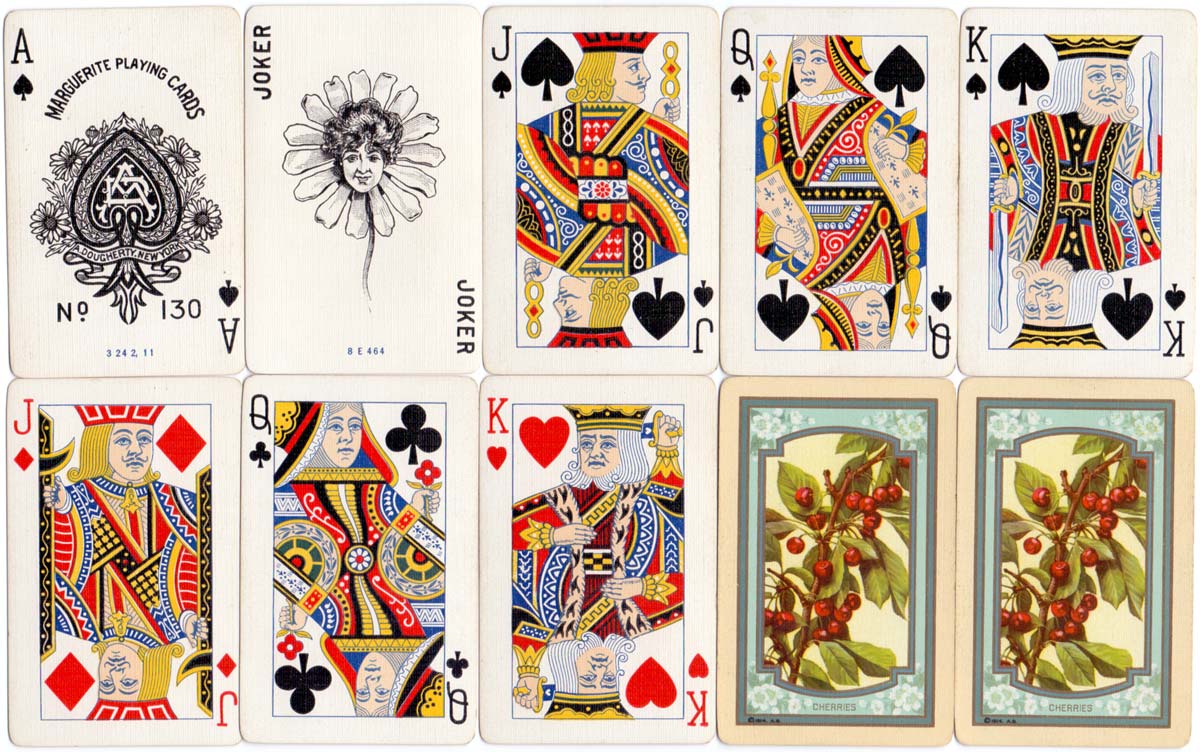
Above: Marguerite #130 playing cards with ‘Cherries’ named back no.1307, c.1914, in narrow size, gold edges, linoid finish. See more back designs►

Above: Marguerite #130 playing cards with ‘Nanette’ named back. The date printed on the bridge rules card is 1926 and the date code on the ace of spades suggests 1928. Image courtesy Matt Probert.

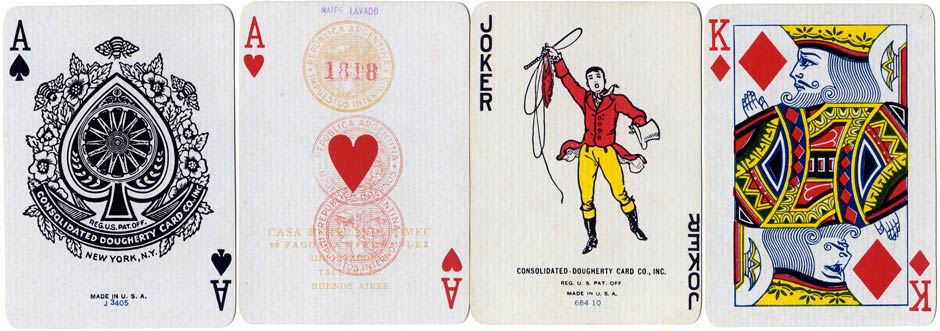
Above: No.9352 Squeezers issued by Consolidated-Dougherty Card Co., Inc. c.1947 and imported into Argentina by Casa Bertrand Domec, Buenos Aires, whose details are overprinted on the ace of hearts. The “Tally-Ho” Joker is still being used. read more...

REFERENCES
Dawson, Tom & Judy: The Hochman Encyclopedia of American Playing Cards, U.S. Games Systems Inc., 2000
Hargrave, Catherine Perry: A History of Playing Cards and a Bibliography of Cards and Gaming, Dover Publications, New York, 1966
Starling, Rod: Shuffling Along with History, in 'Clear the Decks', the Newsletter for 52 Plus Joker (edited by Judy Dawson), September 2010
Thanks to Rod Starling for generously sharing his knowledge and contributing images of cards from his collection.
By Simon Wintle
Spain • Member since February 01, 1996 • Contact
I am the founder of The World of Playing Cards (est. 1996), a website dedicated to the history, artistry and cultural significance of playing cards and tarot. Over the years I have researched various areas of the subject, acquired and traded collections and contributed as a committee member of the IPCS and graphics editor of The Playing-Card journal. Having lived in Chile, England, Wales, and now Spain, these experiences have shaped my work and passion for playing cards. Amongst my achievements is producing a limited-edition replica of a 17th-century English pack using woodblocks and stencils—a labour of love. Today, the World of Playing Cards is a global collaborative project, with my son Adam serving as the technical driving force behind its development. His innovative efforts have helped shape the site into the thriving hub it is today. You are warmly invited to become a contributor and share your enthusiasm.

Related Articles
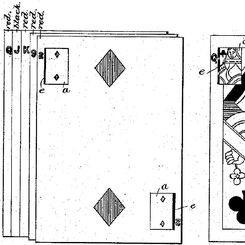
Corner Indices
Corner Indices were a major innovation in playing card production.
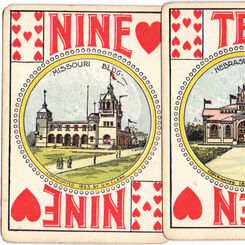
Columbian Exposition Souvenir
Columbian Exposition Souvenir playing cards, G.W. Clark, Chicago, 1893.
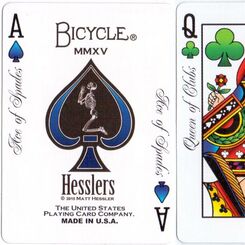
Hesslers Enhanced
Matt Hessler’s “Enhanced” four-colour playing cards, 2015.
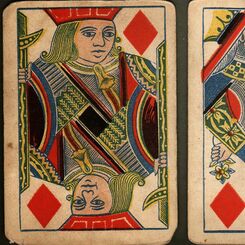
42: Andrew Dougherty
Andrew Dougherty was one of the biggest American card-makers in the 19th century
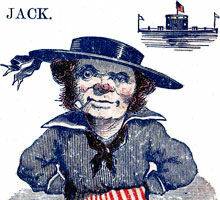
Army & Navy
Andrew Dougherty’s Army & Navy deck from the Civil War era, c.1865.
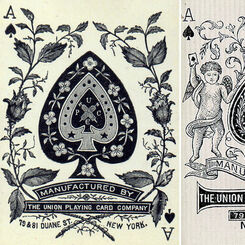
Union Playing Card Co.
Not much is known about this early manufacturer who is reckoned to have traded between c.1860s-1890s...
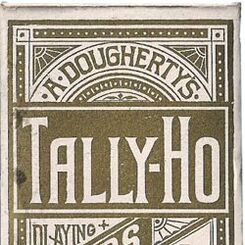
Tally-Ho
The earliest Ace of Spades had the Centre Street address and the Jolly Joker was used until the “Tal...

Triplicate No.18
Dougherty first secured a patent for “Triplicates” in 1876, a novel type of indices with a miniature...
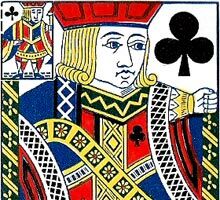
Ivorette
Dougherty was at the forefront of innovation, adding Best Bowers and then Jokers, rounded corners an...
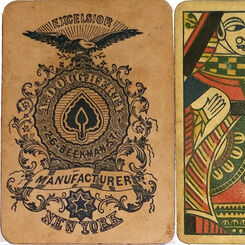
Excelsior
Excelsior by A. Dougherty, c.1870.
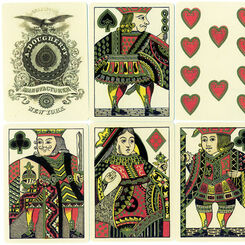
Illuminated Playing Cards, c.1865
Facsimile edition of Andrew Dougherty's Illuminated deck, c.1865, published by U.S. Games Systems, I...
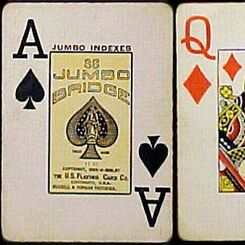
Jumbo Bridge 88
Cards with jumbo indices were introduced in 1895, and were given the subtitle '88'.
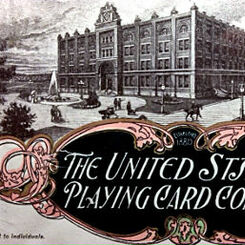
The United States Playing Card Company
Over the years the pressures of competition and other market forces have led to many smaller manufac...
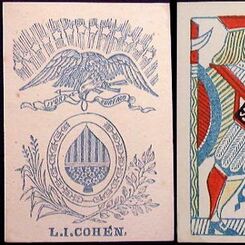
Lewis I. Cohen
Lewis I. Cohen made his first deck of cards in 1832. In 1835 Mr Cohen invented a new machine to prin...
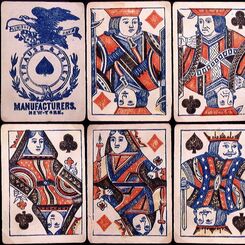
Strauss & Trier, c.1860
Strauss & Trier, New York, c.1860.
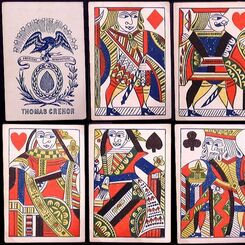
Thomas Crehore copy, c.1850
Thomas Crehore copy, c.1850.
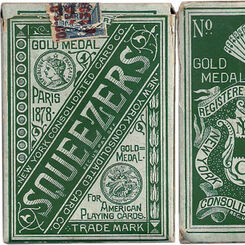
Squeezers No.35
By 1877 the New York Consolidated Card Co's "Squeezers" were a great success on account of the indic...
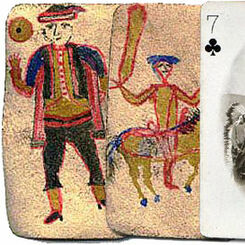
U. S. A.
The manufacture of playing cards in America only began during the second half of the 18th century, a...
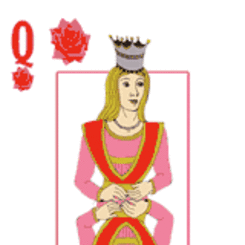
Bonnie Blue’s Rummy Cards
Bonnie Blue’s Rummy Cards.
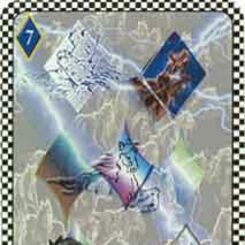
4 Seasons Playing Cards
Colours of the Four Seasons - Playing Card Art Deck
Most Popular
Our top articles from the past 60 days


